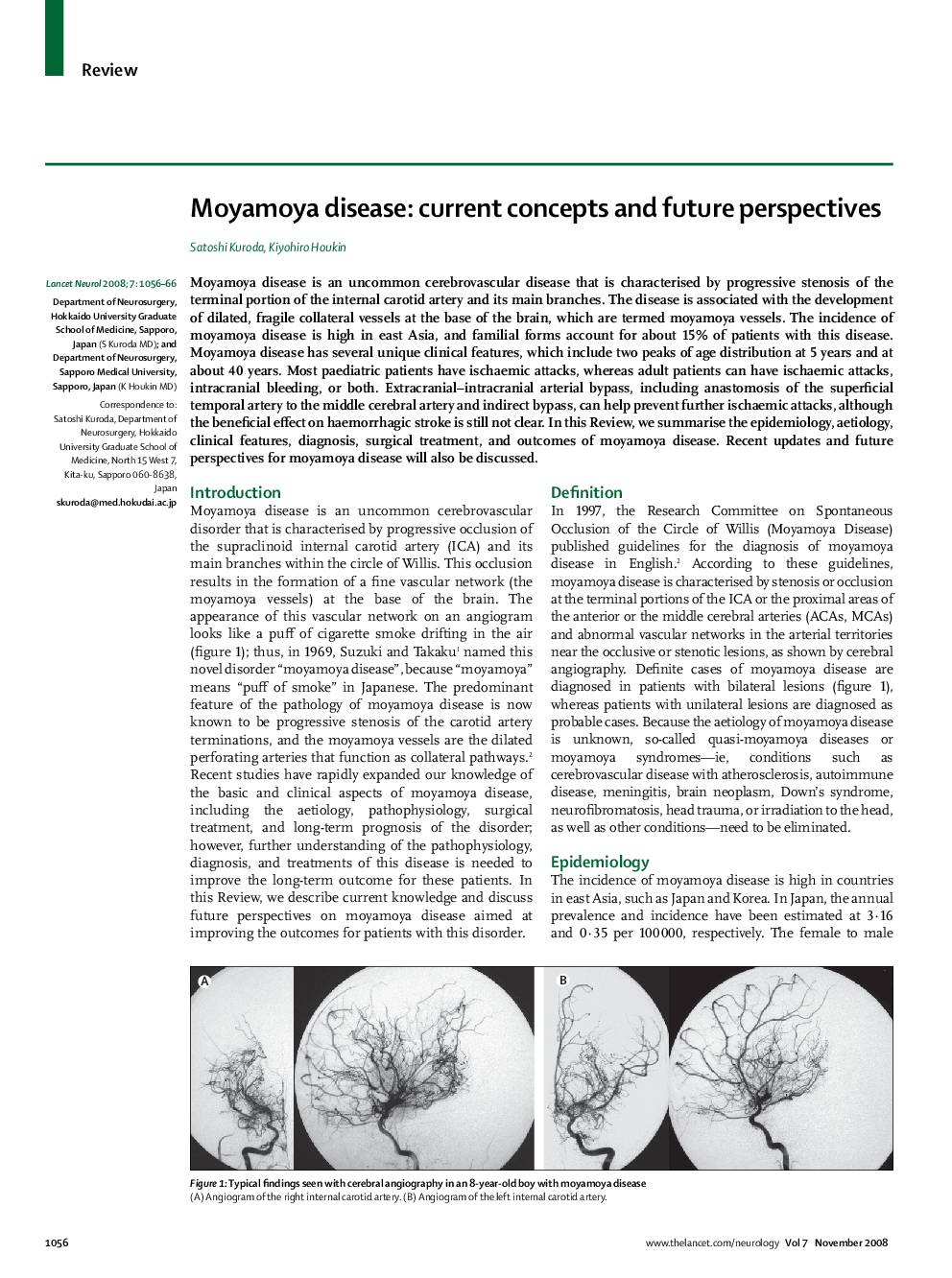| Article ID | Journal | Published Year | Pages | File Type |
|---|---|---|---|---|
| 3067119 | The Lancet Neurology | 2008 | 11 Pages |
SummaryMoyamoya disease is an uncommon cerebrovascular disease that is characterised by progressive stenosis of the terminal portion of the internal carotid artery and its main branches. The disease is associated with the development of dilated, fragile collateral vessels at the base of the brain, which are termed moyamoya vessels. The incidence of moyamoya disease is high in east Asia, and familial forms account for about 15% of patients with this disease. Moyamoya disease has several unique clinical features, which include two peaks of age distribution at 5 years and at about 40 years. Most paediatric patients have ischaemic attacks, whereas adult patients can have ischaemic attacks, intracranial bleeding, or both. Extracranial–intracranial arterial bypass, including anastomosis of the superficial temporal artery to the middle cerebral artery and indirect bypass, can help prevent further ischaemic attacks, although the beneficial effect on haemorrhagic stroke is still not clear. In this Review, we summarise the epidemiology, aetiology, clinical features, diagnosis, surgical treatment, and outcomes of moyamoya disease. Recent updates and future perspectives for moyamoya disease will also be discussed.
